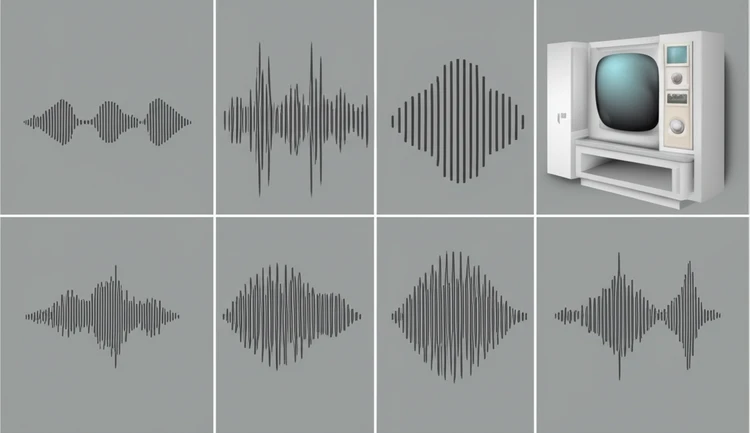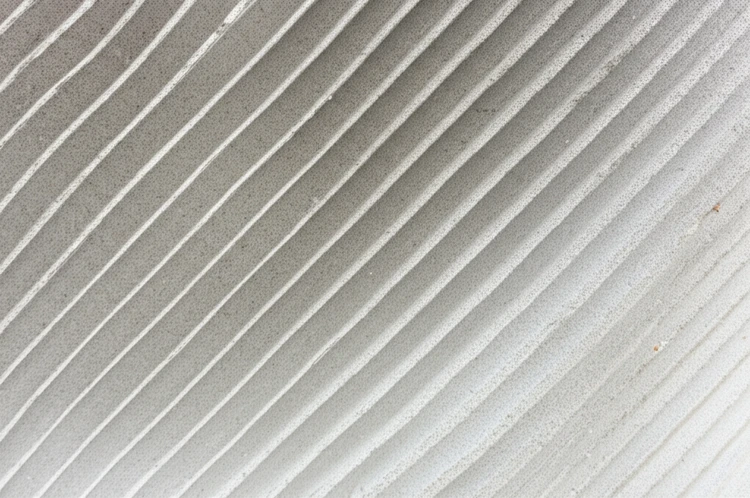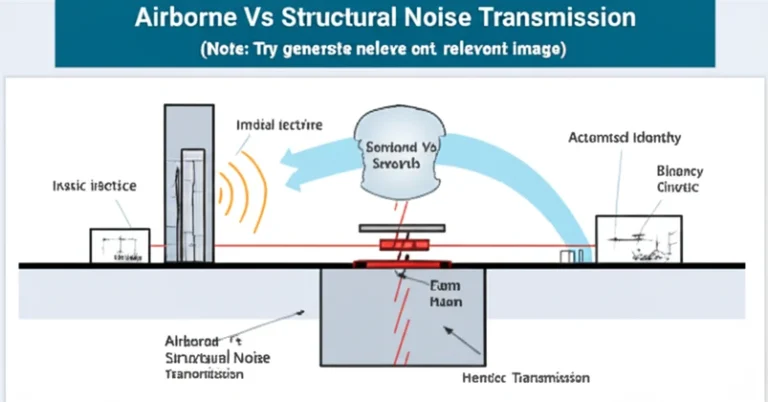
Have you ever noticed how a room’s sound can drastically affect your experience within it? From the muffled quiet of a library to the booming echo in a cathedral, how sound behaves in a space has a profound impact on everything from speech clarity to musical enjoyment. Understanding how sound wave propagation affects room acoustics can transform a space from chaotic and noisy to comfortable and functional.
This article, authored by [Author Name, credentials/experience], delves into the science behind this phenomenon and provides practical solutions for optimizing your own spaces.
What Is Sound Wave Propagation?
Sound wave propagation describes how sound waves travel through a medium, such as air, water, or solids. This process involves the transfer of energy through vibrating particles and is the foundation of how we perceive sound. Sound waves can be longitudinal (particles vibrate parallel to the direction of wave travel) or transverse (particles vibrate perpendicular to the direction of wave travel).
Airborne sound, the type most relevant to room acoustics, consists of longitudinal waves.
Characteristics of Sound Waves
- Frequency: Measured in Hertz (Hz), frequency determines pitch. Higher frequencies produce higher-pitched sounds, while lower frequencies produce deeper tones.
- Amplitude: Measured in decibels (dB), amplitude dictates loudness. Larger amplitudes result in louder sounds.
- Wavelength: The distance between two consecutive peaks or troughs of a wave.
Wavelength significantly influences how sound interacts with objects. When wavelengths are similar to or larger than the size of objects, diffraction occurs, causing the sound to bend around the object. Smaller wavelengths are more likely to be reflected.
Relevance to Room Acoustics
How sound travels and interacts with its surroundings directly affects our perception of it.
Factors like room dimensions, shape, and the materials used within the space influence sound wave propagation, impacting clarity, volume, and overall tone. By understanding these principles, we can manipulate the acoustic environment to achieve the desired sound quality.
How Sound Behaves in a Room
Sound interacts with its environment in four primary ways: reflection, absorption, diffusion, and refraction. The interplay of these phenomena determines a room’s acoustic profile.
Reflection
Sound waves bounce off hard surfaces, leading to echoes and reverberation.
Some reflection is desirable for a lively and natural sound, but excessive reflection can create a noisy and confusing environment. For instance, a large hall with bare concrete walls might be unsuitable for lectures due to prolonged echoes, while a small bathroom with tiled surfaces can make conversations sound harsh. A properly designed concert hall, however, utilizes reflections to enhance the music’s richness.
Absorption
Soft, porous materials absorb sound energy, converting it into heat and reducing the sound’s intensity.
Absorption helps control noise levels and improve clarity. Common absorptive materials include acoustic foam, carpets, heavy curtains, and upholstered furniture.
Diffusion
Irregular surfaces scatter sound waves, ensuring even sound distribution throughout a space. Diffusion helps eliminate acoustic hotspots (areas with excessive sound energy) and dead zones (areas with little or no sound), creating a balanced and natural listening experience.
Examples include diffusers used in recording studios and concert halls or even bookshelves in a living room, which can contribute to diffusion by scattering sound waves.
Refraction
Sound waves bend as they pass through media with different densities. Temperature gradients can also cause refraction, as sound travels faster in warmer air. This bending can alter sound perception, particularly in rooms with mixed materials or large open spaces where temperature variations are significant.
An example is how sound can travel further over a lake on a cool evening due to refraction caused by the temperature difference between the air and water.
The Role of Room Dimensions and Shape
Room Size
Larger rooms give sound waves more space to travel, often emphasizing lower frequencies and leading to longer reverberation times. Conversely, smaller rooms tend to amplify higher frequencies due to shorter wave travel, producing a brighter sound.
Room Shape
A room’s geometry plays a critical role in sound behavior:
- Rectangular Rooms: The most common shape, but prone to standing waves, which occur when sound waves reflect between parallel walls and reinforce specific frequencies, potentially creating an uneven sound profile.
- Circular or Curved Rooms: Can focus sound in specific areas, creating hotspots or distortions, making them acoustically challenging.
Practical Example
Consider a rectangular home office with parallel walls and a hard floor. This configuration is susceptible to standing waves, which can distort audio during conference calls or while listening to music.
Adding absorptive panels strategically on the walls can break up these standing waves, improving clarity and reducing unwanted resonances.
Materials and Their Acoustic Properties
Different materials have varying acoustic properties, influencing sound behavior within a room. Selecting the appropriate materials is crucial for optimizing a space for its intended purpose.
Hard Surfaces
Hard surfaces like glass, concrete, and tile primarily reflect sound, increasing reverberation and echo.
Soft Materials
Soft materials like carpets, curtains, and acoustic panels absorb sound, reducing noise levels and creating a quieter environment. Techniques for sound energy dissipation in building materials are essential for achieving optimal acoustics.
Porous vs. Dense Materials
The relationship between material properties and sound absorption is complex.
While it’s true that porous materials are often effective at absorbing high frequencies, and dense materials can reflect or block lower frequencies, it’s important to understand that all materials exhibit some degree of absorption and reflection across the entire frequency spectrum. The specific absorption characteristics of a material depend on its density, porosity, thickness, and other factors.
| Material | Absorption Characteristics |
|---|---|
| Heavy Curtains | Effective at absorbing mid and high frequencies |
| Acoustic Foam | Designed to absorb a wide range of frequencies depending on thickness and shape |
| Concrete | Highly reflective across most frequencies |
| Carpet | Absorbs high frequencies, but less effective at low frequencies |
Common Acoustic Challenges in Rooms
Echo and Reverberation
Excessive reflections create overlapping sounds, which muddies clarity, especially in large, empty spaces.
Standing Waves
These occur when sound waves reflect between parallel surfaces, amplifying certain frequencies and creating an imbalanced soundscape.
Dead Zones
Areas where sound waves cancel each other out, resulting in reduced audibility.
Flutter Echo
Rapid, repetitive echoes caused by sound bouncing between two parallel hard surfaces, commonly experienced in empty or sparsely furnished rooms.
Solutions for Optimizing Room Acoustics
Acoustic Treatment
- Absorption Panels: Reduce reverberation and control reflections across a range of frequencies.
- Diffusers: Scatter sound waves evenly, preventing hotspots and dead zones.
- Bass Traps: Specifically designed to absorb low-frequency sound build-up in corners.
Furniture Placement
Strategic furniture placement can naturally enhance acoustics by breaking up sound reflections. Bookshelves, rugs, and even large plants can act as diffusers and absorbers.
DIY Enhancements
Simple adjustments can significantly improve room acoustics:
- Adding thick curtains or rugs to absorb sound.
- Rearranging furniture to avoid parallel surfaces and break up reflections.
- Using bookshelves or wall hangings to diffuse sound.
FAQ
What are standing waves in room acoustics?
Standing waves occur when sound waves reflecting between parallel surfaces reinforce specific frequencies at certain locations while canceling out other frequencies at different locations.
This results in an uneven sound distribution where some frequencies are overly prominent and others are suppressed.
How can I reduce echo in a room?
Adding sound-absorbing materials like carpets, curtains, upholstered furniture, or dedicated acoustic panels to walls and ceilings can effectively reduce echo. Breaking up large, flat surfaces by adding furniture, bookshelves, or other objects that disrupt sound reflections also helps.
Why does sound behave differently in small vs. large rooms?
Small rooms tend to amplify higher frequencies due to shorter wave travel distances, creating a brighter sound.
Larger rooms emphasize lower frequencies and experience longer reverberation times due to the longer distances sound waves travel before being absorbed or reflected.
How do I choose the right acoustic treatment for my room?
The best acoustic treatment depends on the specific issues you’re trying to address and the room’s purpose. Consult with an acoustics professional for tailored recommendations.
What is the difference between sound absorption and soundproofing?
Sound absorption aims to improve the sound quality within a room by reducing reflections and controlling reverberation. Soundproofing, on the other hand, aims to prevent sound from transmitting in or out of a room.
Conclusion
Sound wave propagation is the key to understanding room acoustics.
By considering how sound interacts with surfaces through reflection, absorption, diffusion, and refraction, and how room dimensions and materials influence these interactions, we can create spaces optimized for their intended purpose. Whether you’re designing a home theater, a recording studio, or simply seeking to improve the sound quality in your living room, applying these principles can greatly enhance your auditory experience. From simple DIY enhancements to professional acoustic treatments, taking control of your sonic environment is within reach. To learn more about how to improve sound quality in open living areas, consult our dedicated guide.






